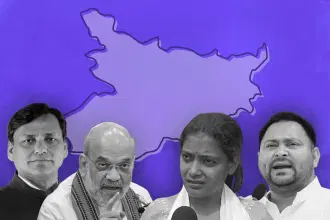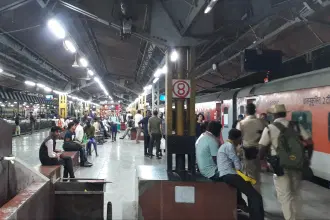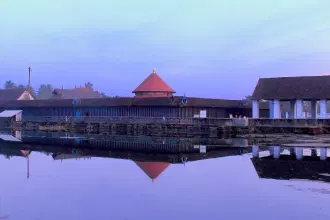World
Myth Of Anti-India Axis: Why Chinese Overtures In The Subcontinent Can't Bypass India
Parth Seth
Jul 30, 2025, 06:04 PM | Updated 06:04 PM IST
Save & read from anywhere!
Bookmark stories for easy access on any device or the Swarajya app.
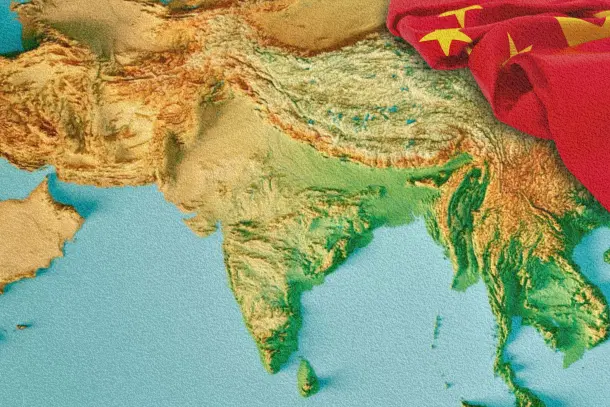
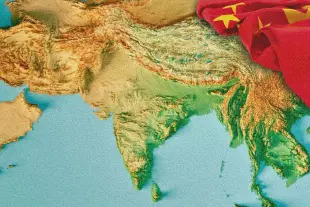
Kunming hosted the China–South Asia Exposition and Trade Fair from 19 to 24 June, a trade and commerce event jointly organised by China’s Commerce Ministry, the provincial governments of Yunnan, Sichuan, and Chongqing, as well as district administrations of major urban centres in the Southwest.
It witnessed the participation of representatives from 73 countries, regions, and organisations, mingling with investors. Started in 2013 to coincide with the launch of the Belt and Road Initiative (BRI), the exposition has reportedly facilitated over 100 billion USD in foreign trade transactions.
While the Kunming Exposition recounted familiar themes of development cooperation that Chinese diplomacy has relied on, a meeting between China, Bangladesh, and Pakistan quietly sought to redraw the Indian subcontinent’s regional system.
China’s Vice Minister of Foreign Affairs Sun Weidong hosted Bangladesh’s Acting Foreign Secretary Ruhul Alam Siddique and Pakistan’s Additional Foreign Secretary Imran Ahmed Siddiqui on the sidelines of the Kunming Exposition. The discussion focused on strengthening collective efforts toward trade integration. Pakistan was also represented by its Foreign Secretary, joining virtually.
The meeting took place in the aftermath of the cessation of hostilities between India and Pakistan, as the two nuclear-armed rivals launched parallel diplomatic offensives to shape international perceptions of their conflict in May. Each framed the episode within their preferred strategic constructs.
The Indian subcontinent’s states had largely adopted a posture of selective strategic silence. While unequivocally condemning the terror strikes in Pahalgam, they simultaneously called for restraint from both parties during the ensuing military stand-off. This underscored the region’s tactical ambivalence and anxiety over escalation.
In this context, the meeting, facilitated by Pakistan’s close ally and reflective of Dhaka’s growing distance from New Delhi precipitated by the rise of Islamist parties after the Awami League’s ouster, cannot be disentangled from Islamabad’s efforts to consolidate support.
Reports began to emerge about the potential metamorphosis of this "trilateral" grouping into a regional organisation to replace the moribund South Asian Association for Regional Cooperation (SAARC), albeit without India.
While increasingly assertive in diversifying partnerships and leveraging China’s rise, these states are not pursuing an anti-India agenda. Rather, they are balancing ties with both powers to safeguard national interests, preserve strategic autonomy, and resist alignment with any bloc that seeks to exclude or encircle India.
The Subcontinent’s Stalled Multilateralism
SAARC was conceived by Bangladesh’s then-President Ziaur Rahman, reflecting the aspiration shared by other states of the region to institutionalise regional cooperation. The decisive shift in the regional balance of power following the 1971 war, India’s integration of Sikkim, and its 1974 nuclear tests reinforced the urgency, particularly among smaller states, for a multilateral platform to mediate asymmetries in bilateral relations.
After its founding in 1985, SAARC had an admittedly sub-optimal record in regional integration. Its charter precludes a bilateral dispute settlement mechanism. SAARC witnessed strides in cooperation on human security, notably through the SAARC Conventions on narcotics’ prevention, protection of women and children from trafficking, and the establishment of the SAARC Development Fund.
However, by making these mechanisms subject to national wills and bilateral understandings, regional action in unison could not be achieved.
Countries have prioritised bilateral over region-wide, multilateral trade negotiations due to the failure of the South Asian Free Trade Area (SAFTA). Sectoral achievements, such as the launch of the SAARC satellite in 2017, could not salvage SAARC from the redundancy brought upon by the breakdown of diplomatic channels between India and Pakistan after the terrorist attack in Uri in 2016.
Why Would the Small States not Group Against India?
SAARC’s evolution has been arrested by the fate of the bilateral ties of its two largest members. But the other member states, notably the small states, have not abandoned the goals of regional integration, as indicated by the founding of BIMSTEC and the BBIN corridor. Moreover, they have used multiple forums to reiterate the need for reviving SAARC and a South Asian identity.
Observers are often remiss in understating the principal interest of small states in the region to hedge by investing in a multilateral organisation that serves as a platform for consensus-based, binding regional agreements.
The meeting in Kunming tried to tap into this ambition but is based on a fallacious assumption: that the subcontinent will integrate in the absence of India.
India is the largest state in the region and, with a population estimated to be over 1.4 billion, is the most populous in the world. Inheriting the regional frontiers from the decolonisation of the subcontinent, India is the only state sharing a border, either terrestrial or maritime, with each state in the region.
This becomes especially significant in land-based trade, which constitutes a significant proportion of intra-regional trade in the Indian subcontinent. Nearly all overland trade routes connecting the small, landlocked Himalayan states must transit through India.
Moreover, India’s bilateral trade with Bhutan, accounting for 82 per cent of Bhutan’s trade volume, and Nepal, comprising 63 percent of Nepal’s total trade, is overwhelmingly land-based, supporting small-scale industries and local communities in the border regions.
A regional organisation without India, therefore, will inadequately harmonise trade regulations and infrastructure, delivering sub-optimal returns of integration.
Additionally, since the reforms to the Indian economy in the 1990s, India’s economic prospects have been pivotal to the region’s economic growth. India’s middle class, expected to reach 75 million by 2030, presents a burgeoning consumer market. India extends significant development assistance to its neighbours.
Since the dawn of Bhutan’s planned development, India has been its largest development partner, having disbursed over 20 billion INR in 2024 to the country.
India was the first responder to Sri Lanka’s economic crisis in 2022 and, by 2024, had disbursed over 4 billion USD in assistance. The West Container Terminal of the port of Colombo, constructed by an Indian multinational company, recently commenced operations. As a result, India was President Dissanayake’s maiden stop after assuming office, dismissing his party’s historical anti-India sentiment in favour of pragmatism.
The Maldives’ Muizzu regime is more representative of the prioritisation of pragmatism over ideology. After storming to office on an India-Out campaign, Muizzu broke tradition and chose Türkiye for his first official state visit over India. But geographical and economic imperatives, as well as India’s diplomatic patience, have led him to recalibrate ties with its largest maritime neighbour.
India reaffirmed its status as the first responder to crises in the Maldives. As the archipelago battles a severe financial crisis, it has benefitted from a 760 million USD currency swap arrangement with India. Unsurprisingly, as part of this recalibration, Prime Minister Modi became the first foreign premier to be hosted by President Muizzu as the chief guest of the Maldives’ 60th Independence Day.
During their joint press briefing, they underlined strategic cooperation in the Indian Ocean region and addressing shared concerns on climate change and diasporic linkages. Enhancing their defence ties, Prime Minister Modi inaugurated the new building housing the Maldivian Defence Ministry, constructed with Indian financial assistance. India also offered concessions on debt servicing, besides extending a new credit line worth 565 million USD.
Small States and Hedging: Agency and Autonomy
However, the region’s small states are not pursuing a strictly India-centric foreign policy. While acknowledging the strategic and economic convergences with India, these states remain cautious of India’s disproportionate size and influence in the region.
The ascent of other middle powers and China provides a credible alternative, enabling them to diversify their economic partnerships and enhance diplomatic leverage in pursuit of their national interests.
For instance, following his state visit to India, President Dissanayake of Sri Lanka undertook a parallel outreach to China, securing a 3.7 billion USD investment guarantee for a refinery project in Hambantota, along with capacity-building initiatives targeting domestic media.
In the Maldives, President Muizzu, elected on a populist platform rooted in religious nationalism, has distanced himself from the India-first policy of the Solih administration without fully reverting to the pro-China stance of former President Yameen. Instead, Muizzu is advancing a reassertion of Maldivian Islamic identity, cultivating diasporic networks in Malaysia and alignments with the Gulf monarchies.
This has yielded tangible dividends, including financial backing for the Maldives International Financial Centre from a Qatari royal’s Dubai-based investment fund and multi-sectoral support from the Saudi Fund for Development.
Meanwhile, Bhutan is recalibrating its China policy not as a replacement for Indian influence but to diversify its development partnerships for its 13th Five-Year Plan, principally by accelerating the demarcation of their border and, more recently, by referring to Tibet as the Xizang Autonomous Region, as preferred by Beijing.
It is facile to misconstrue the overtures of these small states as an affront to India. But neither India nor China can consolidate their position in the regional system without accounting for their aspirations.
Nepal’s foreign policy offers a glaring example. India’s blockade in 2015 drove Nepal closer to Beijing, contributing to Nepal’s entry into the BRI in 2017 and Chinese inroads into critical infrastructure for cross-border electricity transmission and a railroad connecting Kathmandu to Tibet. However, the delays and insufficient returns in these projects soured this relationship.
Pokhara’s airport, touted as a flagship of Chinese–Nepalese connectivity, has failed to attract international traffic from India, rendering it financially unsustainable and raising concerns about debt servicing. Similarly, China’s departure ceded space for Indian investment in the West Seti hydropower project in the impoverished Sudurpaschchim Province.
Given this backdrop, the "trilateral" between China, Bangladesh, and Pakistan is unlikely to evolve into a formal regional organisation to exclude India. This is primarily because it does not address the interests of the Indian subcontinent’s small states.
Sri Lanka, the Maldives, Nepal, and Bhutan demonstrate a preference for strategic autonomy, leveraging equidistance from both India and China to extract developmental finance while preserving diplomatic flexibility. It is improbable that they would compromise this posture by joining any bloc overtly aimed at encircling India.
The regional order remains fluid, with small states navigating the China–India rivalry as active agents shaping outcomes according to their national interests.
Parth Seth is a research fellow at the India Foundation. His interest lies in the themes of multilateralism, development, middle powers, and great power competition. He focuses on South Asia, the Middle East and North Africa (MENA), and Chinese foreign policy.

